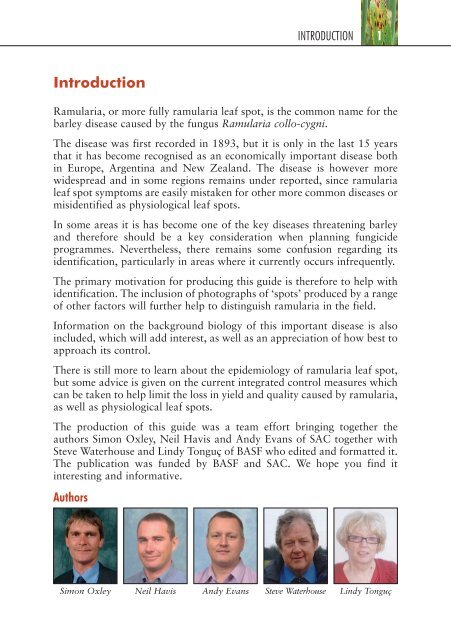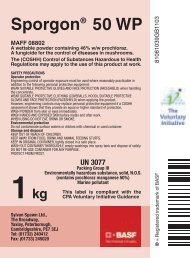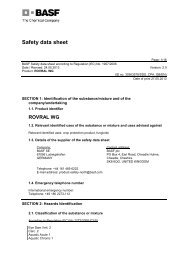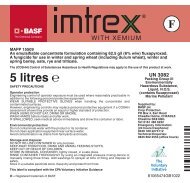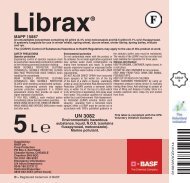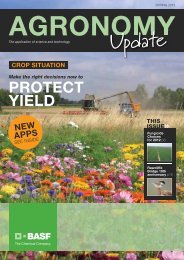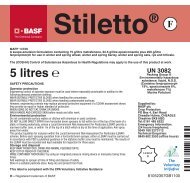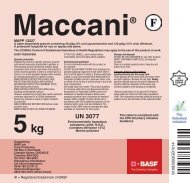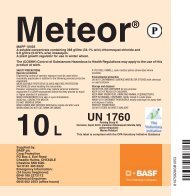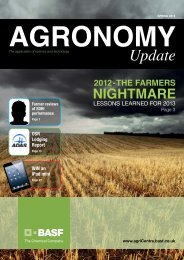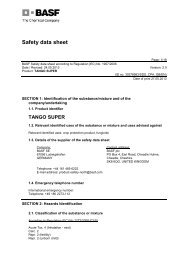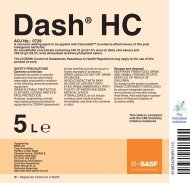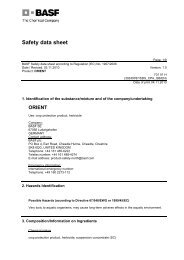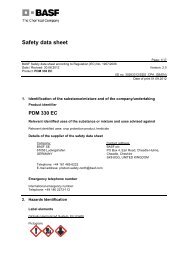a guide to the recognition and understanding of ramularia and other ...
a guide to the recognition and understanding of ramularia and other ...
a guide to the recognition and understanding of ramularia and other ...
Create successful ePaper yourself
Turn your PDF publications into a flip-book with our unique Google optimized e-Paper software.
Introduction<br />
INTRODUCTION 1<br />
Ramularia, or more fully <strong>ramularia</strong> leaf spot, is <strong>the</strong> common name for <strong>the</strong><br />
barley disease caused by <strong>the</strong> fungus Ramularia collo-cygni.<br />
The disease was first recorded in 1893, but it is only in <strong>the</strong> last 15 years<br />
that it has become recognised as an economically important disease both<br />
in Europe, Argentina <strong>and</strong> New Zeal<strong>and</strong>. The disease is however more<br />
widespread <strong>and</strong> in some regions remains under reported, since <strong>ramularia</strong><br />
leaf spot symp<strong>to</strong>ms are easily mistaken for o<strong>the</strong>r more common diseases or<br />
misidentified as physiological leaf spots.<br />
In some areas it is has become one <strong>of</strong> <strong>the</strong> key diseases threatening barley<br />
<strong>and</strong> <strong>the</strong>refore should be a key consideration when planning fungicide<br />
programmes. Never<strong>the</strong>less, <strong>the</strong>re remains some confusion regarding its<br />
identification, particularly in areas where it currently occurs infrequently.<br />
The primary motivation for producing this <strong>guide</strong> is <strong>the</strong>refore <strong>to</strong> help with<br />
identification. The inclusion <strong>of</strong> pho<strong>to</strong>graphs <strong>of</strong> ‘spots’ produced by a range<br />
<strong>of</strong> o<strong>the</strong>r fac<strong>to</strong>rs will fur<strong>the</strong>r help <strong>to</strong> distinguish <strong>ramularia</strong> in <strong>the</strong> field.<br />
Information on <strong>the</strong> background biology <strong>of</strong> this important disease is also<br />
included, which will add interest, as well as an appreciation <strong>of</strong> how best <strong>to</strong><br />
approach its control.<br />
There is still more <strong>to</strong> learn about <strong>the</strong> epidemiology <strong>of</strong> <strong>ramularia</strong> leaf spot,<br />
but some advice is given on <strong>the</strong> current integrated control measures which<br />
can be taken <strong>to</strong> help limit <strong>the</strong> loss in yield <strong>and</strong> quality caused by <strong>ramularia</strong>,<br />
as well as physiological leaf spots.<br />
The production <strong>of</strong> this <strong>guide</strong> was a team effort bringing <strong>to</strong>ge<strong>the</strong>r <strong>the</strong><br />
authors Simon Oxley, Neil Havis <strong>and</strong> Andy Evans <strong>of</strong> SAC <strong>to</strong>ge<strong>the</strong>r with<br />
Steve Waterhouse <strong>and</strong> Lindy Tonguç <strong>of</strong> BASF who edited <strong>and</strong> formatted it.<br />
The publication was funded by BASF <strong>and</strong> SAC. We hope you find it<br />
interesting <strong>and</strong> informative.<br />
Authors<br />
Simon Oxley Neil Havis Andy Evans Steve Waterhouse Lindy Tonguç


